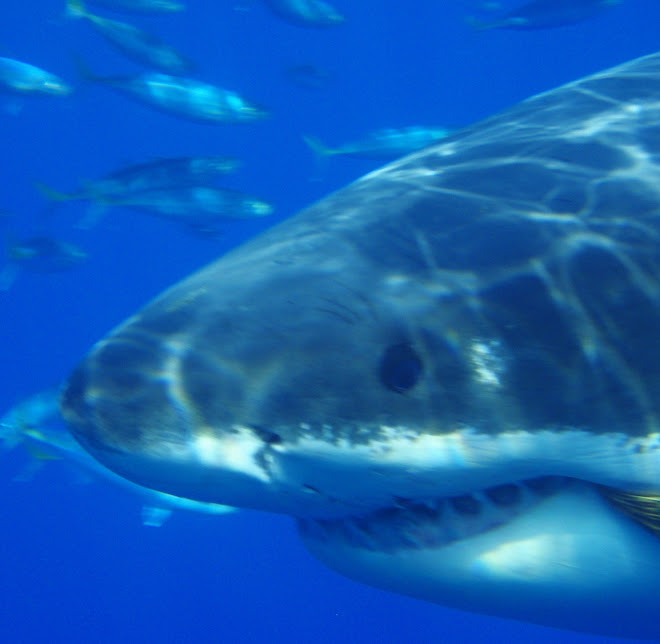
When I took my customary "peek" down to the ocean, I knew it was not going to be one of those gin crystal clear experiences. I saw the big waves hitting the old airport shore...not a good sign.
I was right. The visibility was very poor and the water WAS really cold today. I thought for sure I had taken a wrong turn somewhere and thought I saw iceberg floating by. Either that, or I was in someone's icy cocktail glass by mistake. Just keep swimming, just keep swimming, just keep swimming and eventually you will warm up Of course, it finally did, or I did not sure which. There were allot of jellyfish today in the water, which was expected like clockwork.
The jellyfish are any planktonic group of invertebrate animals composed of about 200 different species of the class Scyphozoa (phylum Cnidaria). The term, jellyfish, is also often used in referring to certain other cnidarians that have a medusoid (saucer- or bell-shaped) body form, such as hydromedusae, the siphonophores (including even the Portuguese man-of-war which technically is not a jellyfish but a pelagic colonial hydroid or hydrozoan), as well as unrelated forms such as salps and comb jellies. Ok, that's way to technical for me.
Seventy of the 200 species of jellyfish are known to sting - causing a range of reactions in humans: from mild skin irritation to death. The sting of the sea wasp, Chironex fleckeri, is so toxic that it can cause death. Some even call this creature the "deadliest animal on earth." Thank goodness the Chironex fleckeri is not found in Hawai`i.
The Box Jellyfish sting is very painful and can even cause anaphylactic shock in some individuals. We have seen swimmers go into shock and have to be ambulanced away when the larger box types are in the water. Last month was a bad month for Box Jellyfish. Many swimmers would not go in the water We sort of shrug it off and go in anyway. Maybe because I have never been seriously stung yet, although Linda got stung fairly bad the month prior. Box Jellyfish , regularly "swarm" to Hawaii's Leeward shores 9 to 10 days after the full moon. And yes, they show up right on call.
There are basically two types of Scyphozoan jellyfish. Those that are free-swimming medusae and those that are sessile (stem animals that attach to seaweed and other objects by a stalk). The order Stauromedusae constitute the sessile polyplike forms. The free-swimming medusoid types, especially the Portuguese man-of-war, are the common, dangerous ones in Hawaiian waters.
As we swam along, I normally listen for two things, boats and dolphins. I did not hear any dolphins, but today I sensed them next to us. As I looked up there they were. It was a very large pod covering several hundred yards scattered about. Lots of babies today. It is always so amazing to watch them interact with one another. The games they play with each other and with us is always such a thrill and never gets old.
Today they were not their usual playful selves, and were probably sleeping for the most part . I will talk more about that in a future blog.
We swam with them for 10-15 minutes, then here came the boats dumping snorkelers in the water like crates of tea into the sea. We hung around for a few more minutes and decided this was not fun and came back with another swimmer who had caught us.
Forgive the clarity of the pictures. I like to post actual photos of the day and with the visibility, this it it today!
Don't forget if you are considering traveling to Kona check out our luxury oceanfront vacation rentals. If not, tell someone else about us and get a credit towards your own stay!
Don't forget to add us to your RSS feeds and favorites.
The scientific information herein is courtesy of the Hawaiian Lifeguard Association. If you would like photos or more information on this subject visit
A Hui Hou









No comments:
Post a Comment